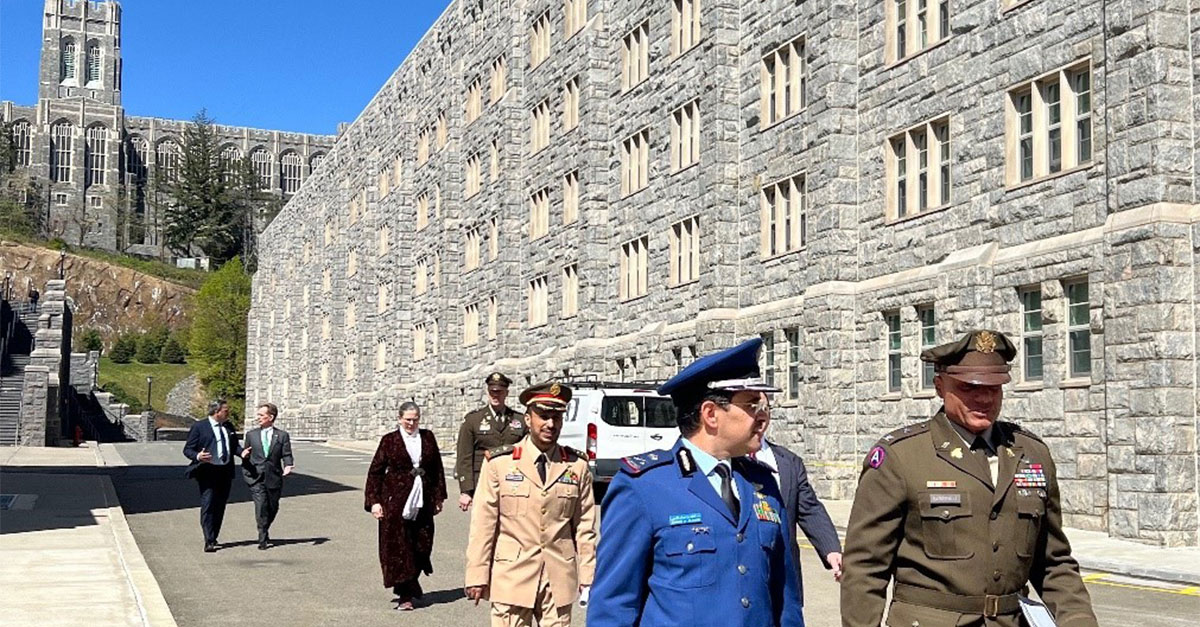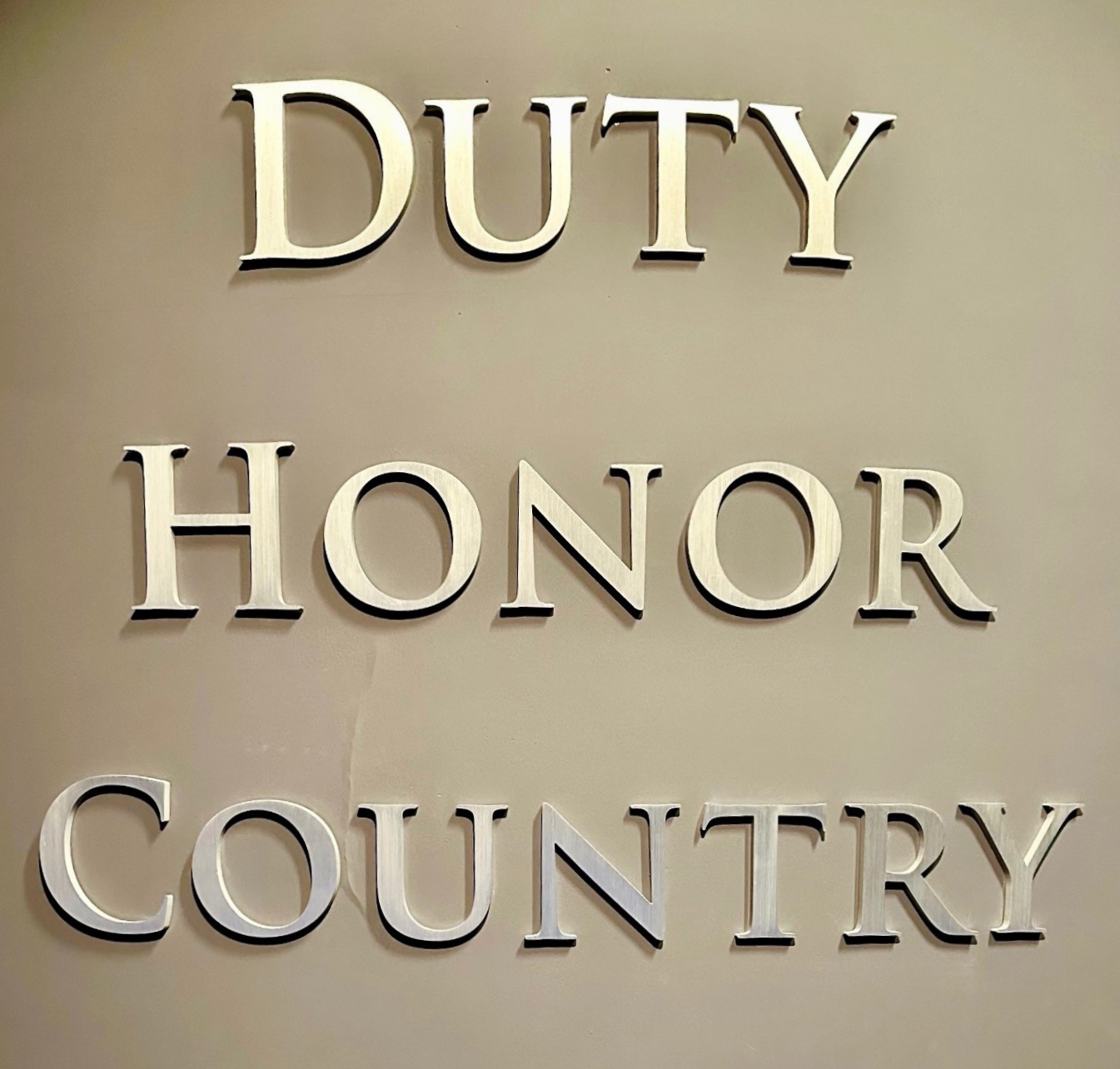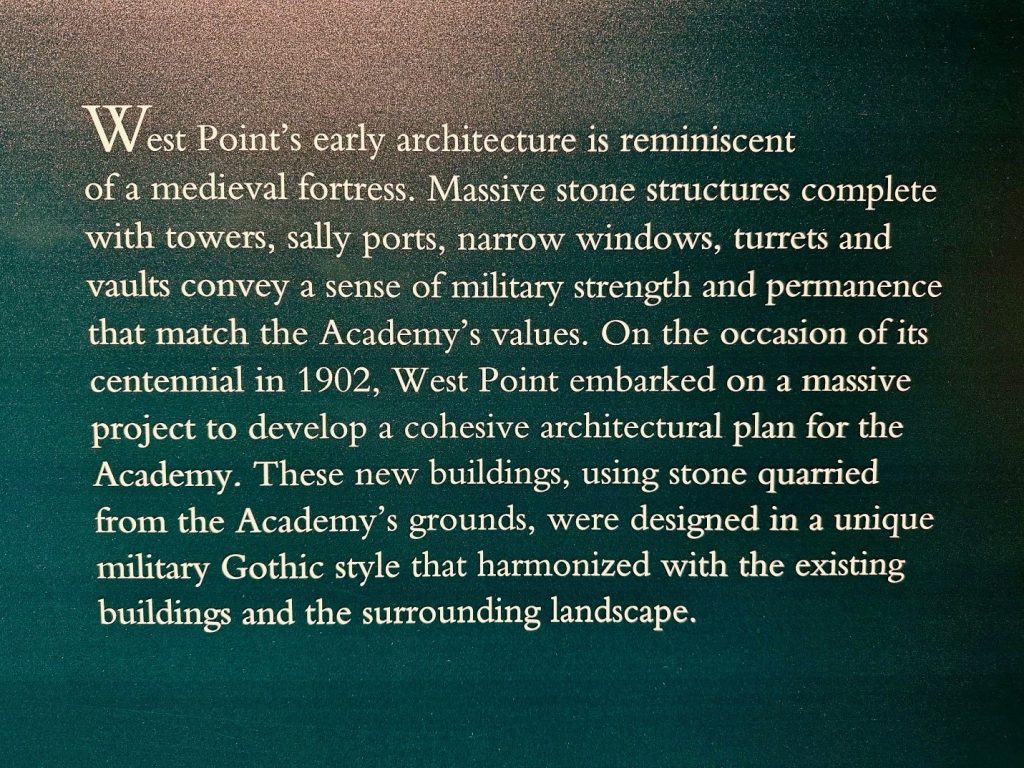By
and
The United States Military Academy at West Point stands among the foremost institutions globally for cultivating leaders. Those within the esteemed Long Gray Line uphold the ethos of “Duty, Honor, Country,” leading in various spheres, whether in uniform or beyond. Beyond rigorous academic and physical challenges, West Point instills essential military proficiencies crucial for success in today’s intricate landscape of war and peace, fostering a commitment to excellence and national service among cadets as future Army officers.
Colonel (Ret.) Abbas Dahouk and I serve on the Board of Directors of the National Council on U.S.-Arab Relations. We joined fellow members from the National Council – Board Chairman John Pratt and Executive Vice President & Director of Development Patrick Mancino – for a recent visit.
We first explored the Malek Visitors Center, an essential stop when entering the Military Academy at West Point. The center features seven exhibit areas, including two movie theaters, and 20 exhibitions. A nine-minute film, West Point – The National Treasure, plays every 20 minutes.
“The Long Gray Line,” in its simplest definition, encompasses all graduates and cadets of the military academy. The phrase signifies the unique bonds connecting every graduate to those who came before and those who will follow. It symbolizes the demanding four-year journey experienced by all cadets, a period of instruction steeped in tradition and largely unchanged since its inception. The term evokes the image of the gray cadet uniforms worn by generations of young individuals, enduring the discomfort of itchy wool fabric and stiff collars—a tradition integral to West Point’s pageantry. This shared tradition is reflected in the resilience of outstanding American leaders, including two U.S. presidents, numerous generals, industry leaders, and over 80 thousand graduates who have led our Army’s soldiers as young officers.
West Point boasts a distinguished roster of alumni, including luminaries such as Ulysses S. Grant, Dwight D. Eisenhower, Douglas MacArthur, Stonewall Jackson, George S. Patton, Lloyd Austin, David H. Petraeus, Norman Schwarzkopf, Buzz Aldrin, Mike Krzyzewski, William Westmoreland, and many others.
The military academy is located alongside the Hudson River. Strategic control of the river held immense significance during the American Revolution as both warring factions recognized its pivotal role in shaping the conflict’s outcome. The Hudson River Valley, alongside lakes George and Champlain, represented potential invasion routes from Canada. To thwart British naval advancement upriver, the Continental Army constructed the Hudson River Chains between 1776 and 1778. These chain booms, overseen by the Highlands Department, served as formidable defenses.

Today, several links of the Great Chain are prominently displayed on the grounds of the Academy, overlooking the very river that played a decisive role in shaping the destiny of a nation nearly two and a half centuries ago.

Civil War Rivals – Robert E. Lee graduated from West Point in 1829 and later served as Superintendent from 1852-1855. Ulysses S. Grant graduated from West Point in 1843.
Established on March 16, 1802, the United States Military Academy is a renowned four-year leadership institution dedicated to shaping, educating, training, and motivating a Corps of Cadets into becoming commissioned leaders of character. Their commitment is to embody the Army Values, and stand prepared for a lifetime of service to both the Army and the Nation. Upon graduation, West Point cadets receive Bachelor of Science degrees and are commissioned as second lieutenants in the Army.

In 2008, Colonel Abbas Dahouk, then Lieutenant Colonel, joined West Point’s faculty to teach Arabic and Persian-Farsi within the academy’s Department of Foreign Languages.
In the spirit of April’s International Month at West Point, the National Council accompanied a delegation of military leaders from Saudi Arabia who were invited by West Point to participate in a visit.

National Council on U.S.-Arab Relations Executive Vice President & Director of Development Patrick Mancino, Saudi Arabian Major Khaled Al-Malki, West Point Colonel Scott Harris, National Council Board Member Paige Peterson, Saudi Arabian Major General Salman Awadh Al-Harbi, National Council Board Member Colonel (Ret.) Abbas Dahouk, National Council Board Chairman John Pratt, and Saudi Arabian Colonel Hashem Al-Qahtani.
The Historic Thayer Hotel is a property in West Point perched atop a hill overlooking the Hudson River and the United States Military Academy. The hotel has stood as a national gem since its inauguration in 1926. Welcoming past U.S. Presidents, global dignitaries, and renowned personalities, this distinguished hotel holds a unique allure. Guests embark on a journey to uncover a captivating fusion of over two centuries of military heritage intertwined with a comprehensive range of contemporary comforts and amenities.
West Point is a 50-minute drive from New York City.

International cadets from Albania and Japan.
April at West Point brims with international activities, notably the annual Sandhurst Military Skills Competition held on April 26 and 27 at the academy. Originating in 1967, the competition has evolved over the years. This year’s event welcomed teams from West Point, Army ROTC units nationwide, all service academies, and 14 international teams.

Patrick Mancino, Colonel (Ret.) Abbas Dahouk, Major General Salman Al-Harbi, West Point Colonel John Baskerville, John Pratt, Colonel Hashem Al-Qahtani, and Paige Peterson, gathered in front of Washington Hall.
The United States Military Academy at West Point is a highly competitive federal service academy with an acceptance rate of 11% for the class of 2027. Its selective nature sets it apart, with an application process distinct from many other institutions. Prospective students must meet specific eligibility criteria, including U.S. citizenship, age, and marital status. Individuals meeting these requirements can submit a candidate questionnaire to ascertain their competitiveness for admission as an Official Candidate. Additionally, applicants must secure a nomination from a senator, member of Congress, presidential nomination, or service member. The Army application process also entails a medical examination, a fitness assessment, and a nomination interview. The statistical profile depicted above for the class of 2027 speaks for itself.
The stated mission of West Point: To build, educate, train, and inspire the Corps of Cadets to be commissioned leaders of character committed to the Army Values and ready for a lifetime of service to the Army and Nation.

The West Point motto: “DUTY, HONOR, COUNTRY.”

The delegation started the day with a brisk walk around the academy. The Gothic architecture is spectacular.
West Point’s name is connected to America’s history and dates back to the Revolutionary War, when both sides realized the strategic importance of the commanding terrain on the west bank of the Hudson River. Since 1778, it has remained an active Army post.

West Point is the oldest continuously occupied regular army post in the United States.
During the 19th century, West Point graduates were largely responsible for the construction of the bulk of the nation’s earliest waterways, infrastructure, harbors, the Washington Monument, and conducted surveys for the future transcontinental railroads.

Walking towards The Washington Monument at West Point. The equestrian statue of George Washington was sculpted in 1856 and was the first equestrian sculpture cast in the United States. The bronze replica at West Point was dedicated in 1916.
Cadets heading to lunch.

The “Old Cadet Mess Hall” was built in 1852.

The Mess Hall feeds 4,400 cadets a day.

A delicious lunch at the West Point Club.

Spring in all it’s glory.

Major General Salman Al-Harbi, Colonel John Baskerville, and Paige Peterson walk to their next meeting.

More than 1,240 U.S. citizens and 14 international students, including 247 women and 463 minorities, will report to join West Point’s Class of 2027. The incoming class was selected from a pool of nearly 12,600 applicants. Minority enrollment, roughly 38 percent, includes 127 African Americans, 137 Hispanic Americans, 170 Asian-Americans and 18 Native Americans.
There are typically around 60 international cadets in attendance at West Point.

Learning about West Point.
Duty-Honor-Country. Those three hallowed words reverently dictate what you ought to be, what you can be, and what you will be. They are your rallying points: to build courage when courage seems to fail; to regain faith when there seems to be little cause for faith; to create hope when hope becomes forlorn.
General Douglas MacArthur

Cadets asking questions.
The delegation with Saudi Arabian military leaders had the opportunity to meet with some current cadets. They seized the opportunity to pose candid questions to the delegation, displaying their deep understanding of current events in the Middle East and even asking several questions in Arabic. The conversation was marked by its candid and open nature. And, of course, all of it was off-the-record.

The Long Grey Line.

Cadet Chapel.
The academy and grounds were declared a National Historic Landmark in 1960 due to the Revolutionary War history, and the age and historic significance of the academy itself.

Superintendent’s Quarters (1820) is one of the oldest remaining building on post.

The hat is integral to the official military dress uniform for officers of the Royal Saudi Land Forces. Its design includes a prominent golden middle badge featuring a palm, symbolizing growth, vitality, and prosperity, alongside crossed swords representing justice.

Exchange of views about the state of the world.

Two Generals—Major General Salman A. Al-Harbi, Defense Attaché to the United States & Canada at the Embassy of the Kingdom of Saudi Arabia in Washington, D.C., and Brigadier General Shane Reeves, 15th Dean of the Academic Board at West Point.

The exchange of gifts among officers holds meaning within military culture and tradition. Through this practice, officers express their mutual commitment to their mission, demonstrate trust in one another, and reaffirm their collective dedication to serving their respective nations.

Our delegation.
West Point doesn’t have fraternities, or sororities, or secret societies. Its graduates think of themselves as part of one Long Gray Line that stretches right back to that very first class of 1802. They are part of a huge extended family that finds unity in a common experience… To West Pointers, those three words, “Duty, Honor, Country,” are more than a motto. They are immortal ideals that guide your life.
General Norman Schwarzkopf, West Point Class of 1956

Good Night, West Point.

















